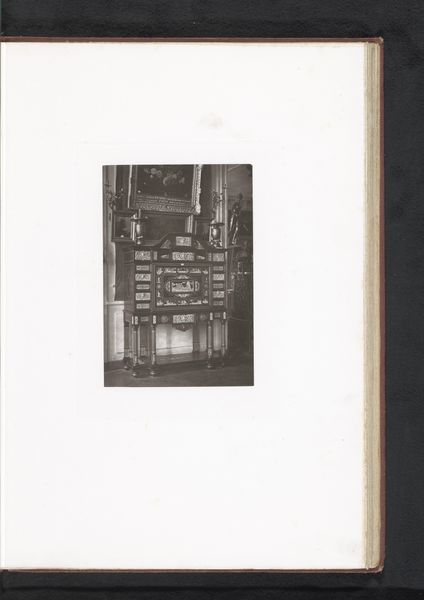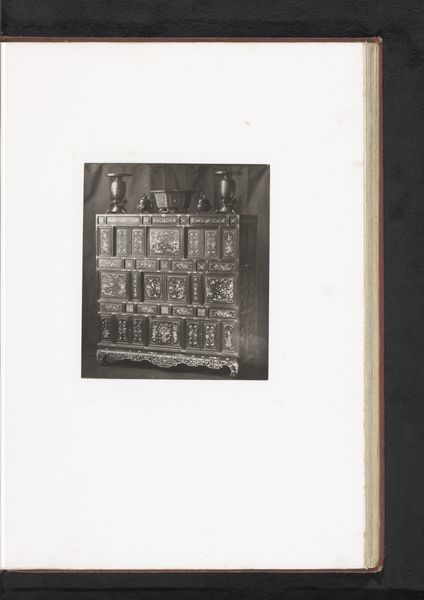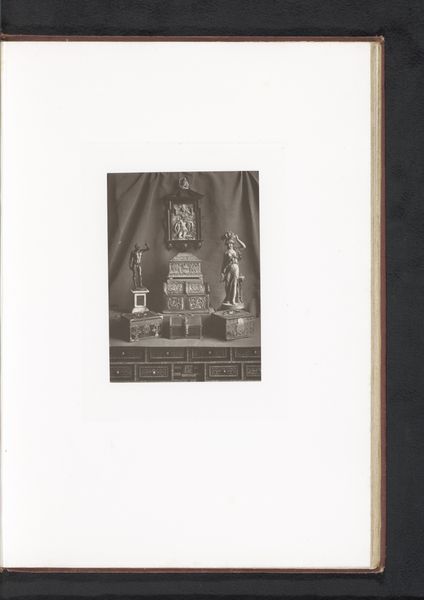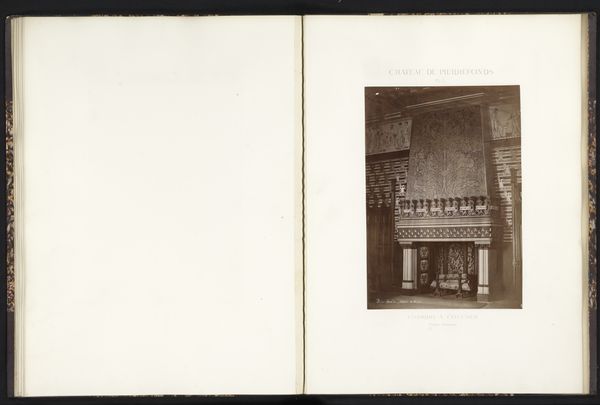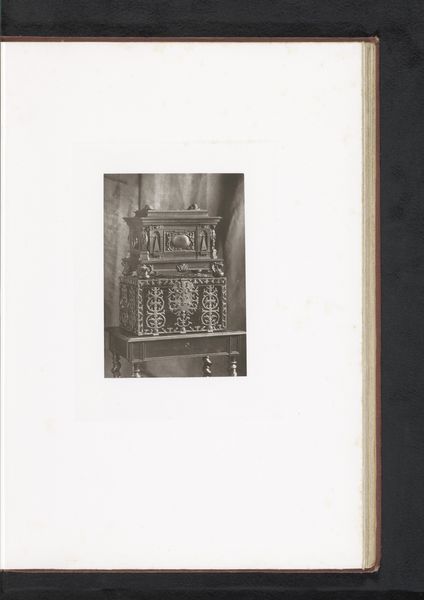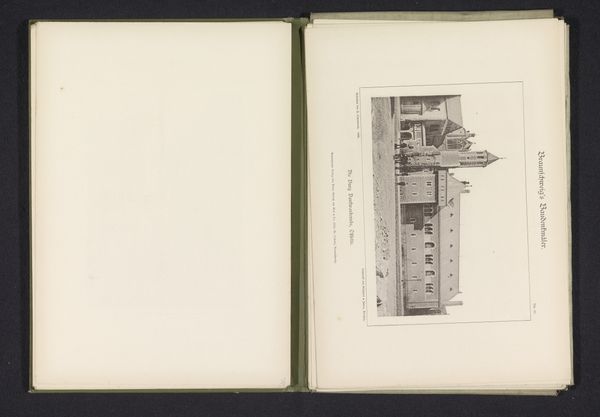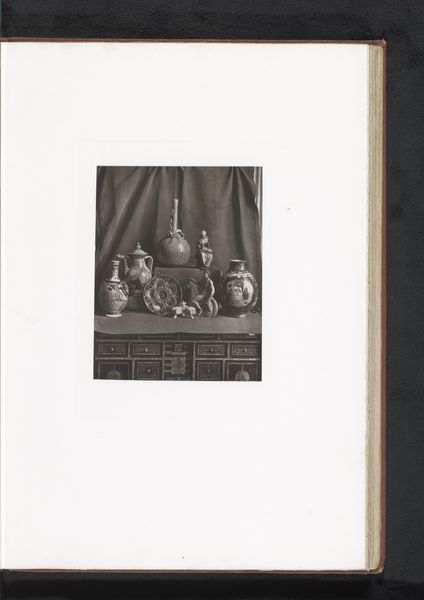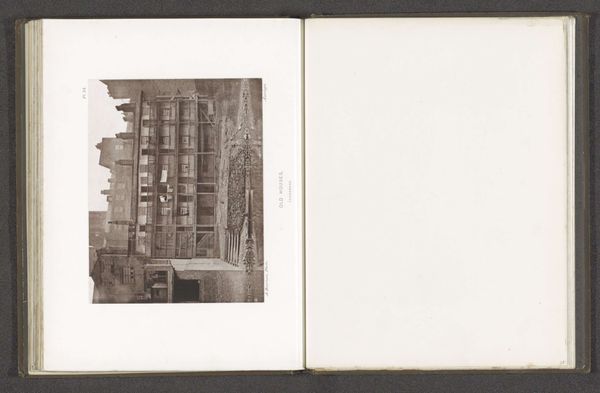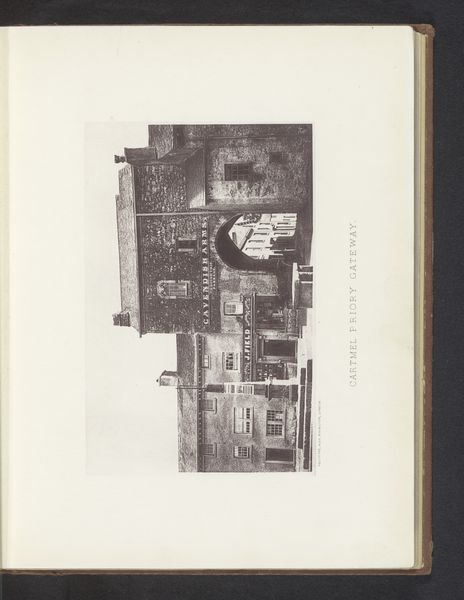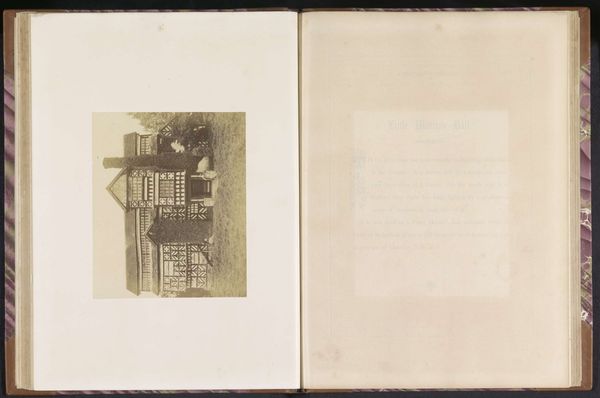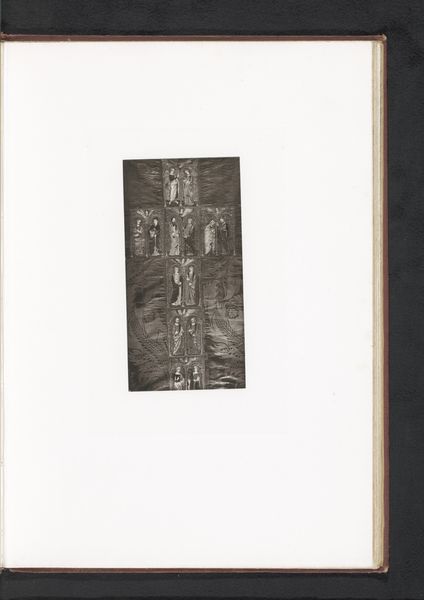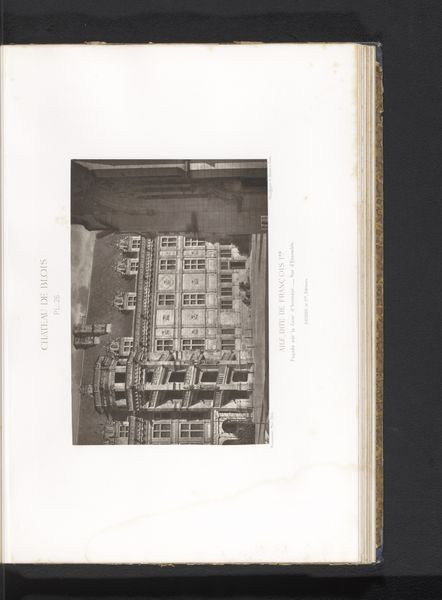
Twee kasten en drie kisten, opgesteld tijdens de Exposition Rétrospective van 1873 in Tours, Frankrijk 1873
0:00
0:00
mixed-media, photography
#
mixed-media
#
sculpture
#
photography
Dimensions: height 206 mm, width 156 mm
Copyright: Rijks Museum: Open Domain
Curator: This image, taken in 1873 by Gabriel Blaise, showcases an arrangement of furniture at the Exposition Rétrospective in Tours, France. It is a mixed-media work involving photography, featuring two cabinets and three chests. Editor: My first thought is the overwhelming ornamentation! Look at the detail on every surface. There’s a clear sense of artistry applied to function here. What would these be made from? Curator: I think it’s crucial to consider what this meticulous detail signified in its own era, specifically through a postcolonial lens. What resources, what crafts were necessary to create such displays? Editor: Exactly! The sheer volume of labour embedded within is astounding. From the procurement of materials to the crafting and assembly, it speaks of a specific kind of resource accessibility. It would be illuminating to study the workshops or regions in which this style of piece originated, the skills that went into creating these kinds of functional structures. Curator: And it begs the question: Who was this craft designed for? Were they made for local consumption, or were these goods representative of colonial ambitions? I suspect there is a strong interplay between domestic industry and broader social and political structures, as well as potential inequalities within labor divisions during the era. Editor: Yes, exactly. The photo also suggests something about the aspiration and reach of industrial exhibitions and of consumer desire in this era, doesn’t it? There is definitely something fascinating about understanding the intersection of technology, craft, and aspiration encapsulated within such furniture. Curator: Indeed. It encourages us to examine the objects themselves not just as examples of artistic endeavor, but as artifacts laden with colonial-era social meanings and values, pointing us toward urgent, related cultural and political dialogues. Editor: This piece brings attention to overlooked connections between global economies and local industries; it forces one to look at how even mundane-seeming objects have stories ingrained in their material. Curator: Agreed, and perhaps in questioning these connections, we can confront broader, deeply embedded historical legacies. Editor: Absolutely. By analyzing the production process, the resources used, and the implied value, we might gain insight into a specific period and societal status that often remains unseen.
Comments
No comments
Be the first to comment and join the conversation on the ultimate creative platform.
